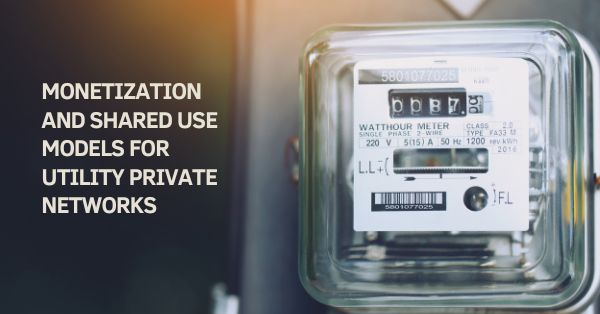Charter investor lawsuit over ACP fallout and broadband losses
A fresh class action intensifies scrutiny of Charter Communications broadband strategy and disclosures following the end of the Affordable Connectivity Program (ACP) and a sharp Q2 subscriber decline.
Class action overview and claims
New complaints filed in the Southern District of New York allege Charter and senior executives misled investors about the operational and financial impact of ACPs expiration, setting a class period spanning late July 2024 through late July 2025.
The suits contend Charter understated sustained risks to Internet customer retention and revenue and painted an overly optimistic picture of execution and long-term EBITDA growth, with plaintiffs now seeking lead plaintiff appointments this fall.
ACP exposure and Q2 2025 broadband results
ACP, which provided a $30 per month subsidy to eligible low-income households, exhausted funding in June 2024; Charter was the largest ACP participant with more than 5 million subsidized broadband customers.
In Q2 2025, Charter reported a net loss of roughly 117,000 Internet subscribers, including about 50,000 disconnects associated with ACPs end and higher non-pay among newly acquired value-segment customers who would have qualified under ACP; EBITDA was reported at about $5.7 billion with modest year-over-year growth aided by other revenue, and the stock fell sharply on the print.
Implications for cable broadband operators
The case crystallizes three structural pressuressubsidy concentration risk, intensifying competition, and sluggish household formationthat are reshaping cable broadband economics and investor expectations.
Managing subsidy concentration and churn risk
Heavy reliance on ACP-linked cohorts can create cliff effects in churn and collections when funding lapses, with downstream impacts on ARPU, bad debt, and field operations; operators need durable playbooks for income-based segments beyond federal subsidies.
Fiber and FWA competition squeezes cable growth
Churn pressure is compounded by fiber expansion from telcos and municipals and aggressive fixed wireless access (FWA) offers from T-Mobile and Verizon, which continue to siphon budget-conscious and lightly used households from cable tiers.
Slower household formation pressures net adds
Slower new household formationtied to immigration patterns and affordabilityreduces the addressable pool of first-time broadband purchasers, elongating recovery timelines for cable net adds even as operators optimize offers.
Rising disclosure expectations and KPIs
Investors increasingly expect granular bridges for net adds, churn, non-pay, and ACP-impacted cohorts, plus clear commentary on pricing, promotion cadence, and competitive win-loss dynamics; gaps invite litigation risk and valuation penalties.
Analyst takeaways and peer benchmarks
Market reaction has been severe, but expert commentary points to nuance around transparency, seasonality, and competitive exposure across operators.
Transparency, materiality, and timing debates
Some analysts argue Charter has been reasonably clear in attributing a portion of losses to ACP and non-pay dynamics; the legal question is whether management properly framed persistence, magnitude, and mitigation of those headwinds.
Q3 seasonality and subscriber trajectory
Back-to-school and post-summer moving cycles typically lift gross adds for cable, offering a near-term opportunity to stabilize subscriber trajectorieseven as underlying churn and credit trends bear close watching.
Competitive exposure by footprint and strategy
Comcast, Cox, and Altice had smaller ACP books relative to Charter, while Verizon and T-Mobiles FWA products continue to compete on simplicity and price; operators with deeper fiber overlays or early DOCSIS 4.0 deployments may see better retention and upsell economics.
Strategic actions for broadband resilience
Operators should use the ACP reset to harden commercial strategy, modernize credit and retention operations, and recalibrate investor communications.
Rebaseline guidance and add cohort KPIs
Disclose a clear net-add bridge that isolates ACP-related churn, non-pay, and competitive losses; add cohort-level metrics (bad-debt rates, retention curves, promo roll-off) to rebuild confidence and reduce litigation exposure.
Strengthen credit and collections for value tiers
Enhance risk scoring, enable prepaid or deposit-backed tiers, and implement soft-landing downgrades before disconnect; automate outreach and payment plans to compress bad debt while preserving customer lifetime value.
Optimize product mix, pricing, and promos
Stand up permanent, low-cost tiers with transparent fees, bundle mobile MVNO lines to improve stickiness, and deploy targeted retention offers versus broad discounting to protect ARPU and reduce promo churn.
Accelerate network upgrades and CPE differentiation
Prioritize DOCSIS 4.0 and mid/high-split upgrades where competitive overlap is highest, pair with WiFi 7 gateways and managed in-home WiFi for measurable experience gains that blunt FWA and fiber defection.
Leverage seasonality with disciplined execution
Front-load back-to-school campaigns, streamline self-install and move flows, and coordinate channel partners around hyperlocal promotions near MDUs and campuses to maximize Q3 gross adds at efficient CAC.
Proactive engagement on funding and compliance
Track federal and state actions on any ACP successor and maximize participation in BEAD and related programs, ensuring documentation, eligibility verification, and reporting meet emerging audit expectations.
Key milestones and market signals
The next two quarters will reveal whether ACP aftershocks are transient or structuraland how courts and regulators respond.
Litigation timeline and disclosure updates
Monitor motions to dismiss, potential class certification, and any revised disclosures from Charter that clarify cohort impacts, non-pay normalization, and execution levers.
Q3–Q4 subscriber and credit trends
Seasonal uplift versus underlying churn will be key, as will changes in non-pay and voluntary disconnects among price-sensitive customers.
Affordability policy developments
Any movement toward an ACP replacement, expansion of Lifeline, or state-level affordability initiatives could meaningfully alter retention dynamics for low-income households.
FWA and fiber competitive intensity
Watch for signs of FWA net-add deceleration, new fiber build announcements, and price moves that reset entry-level broadband benchmarks.
Capital allocation and upgrade priorities
Charters mix of network capex, customer-premise upgrades, and buybacks will signal confidence in near-term recovery versus a longer digestion period for cable broadband.

































